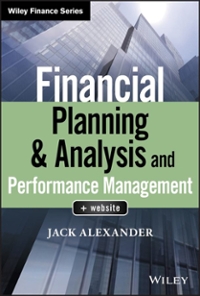Question
Sonia is based in the U.S. and she would like to invest in an Australian corporation to diversify her portfolio. Currently the Australian corporation is
Sonia is based in the U.S. and she would like to invest in an Australian corporation to diversify her portfolio. Currently the Australian corporation is issuing two bonds in the U.S. market:
- Bond ABC denominated in USD
- Bond XYZ denominated in AUD
- Please describe the types of Bonds ABC and XYZ.
[2 Marks]
1)Bond ABC denominated in USD - FOREIGN BOND
Foreign bonds are issued in a domestic market by a foreign issuerbut in the currency of the domestic country.
Bond XYZ denominated in AUD - INTERNATIONAL BOND (MATILDA BOND)
An international bond is a debt obligation that is issued in a country by a non-domestic entity. Generally, it is denominated in the currency of its issuer's native country. Like other bonds, it pays interest at specific intervals and pays its principal amount back to bondholder at maturity.
- Sonia finds that the USD/AUD exchange rate has been quite volatile over the past six months. Sonia is concerned about the exchange rate volatility, which bond is best for her and please explain your answer.
[3 marks]
FOREIGN BOND is better for her because it will help her overcome currency risk.
she resides in USA and bond is in US curency therefore if the foreign exchange markets are volatile then it could affect the exchange rate and value of the currency can come down, but since if she issues the foreign bond then she will not face any risk
- Assume that bonds X, T and U all have the same maturity.
Based on the table below, what pattern do you observe in the estimated vs. actual percentage changes in bond price when interest rate changes? What is the best terminology to describe this pattern (use terminology covered in this unit) and what relationship between bond prices and interest rates does this pattern imply. Please explain your answers.
[5 Marks]
|
| Estimated percentage change in price if interest rates change by: | Actual percentage change in price if interest rates change by: | ||
|
| -30 basis points | +30 basis points | -30 basis points | +30 basis points |
| Bond X | +12% | -9% | +12.12% | -8.88% |
| Bond T | +9% | -6% | +9.05% | -5.95% |
| Bond U | +11% | -8% | +11.10% | -7.90% |
- Assume bonds X, T and U all have the same maturity.
Based on the information in the table below, rank these three bonds by their coupon rates (no calculation is necessary). Where rank = 1 is highest coupon. You must justify your answers based on the information given in the table below.
[5 Marks]
|
| Estimated percentage change in price if interest rates change by: | Actual percentage change in price if interest rates change by: | ||
|
| -30 basis points | +30 basis points | -30 basis points | +30 basis points |
| Bond X | +12% | -9% | +12.12% | -8.88% |
| Bond T | +9% | -6% | +9.05% | -5.95% |
| Bond U | +11% | -8% | +11.10% | -7.90% |
Step by Step Solution
There are 3 Steps involved in it
Step: 1

Get Instant Access to Expert-Tailored Solutions
See step-by-step solutions with expert insights and AI powered tools for academic success
Step: 2

Step: 3

Ace Your Homework with AI
Get the answers you need in no time with our AI-driven, step-by-step assistance
Get Started


